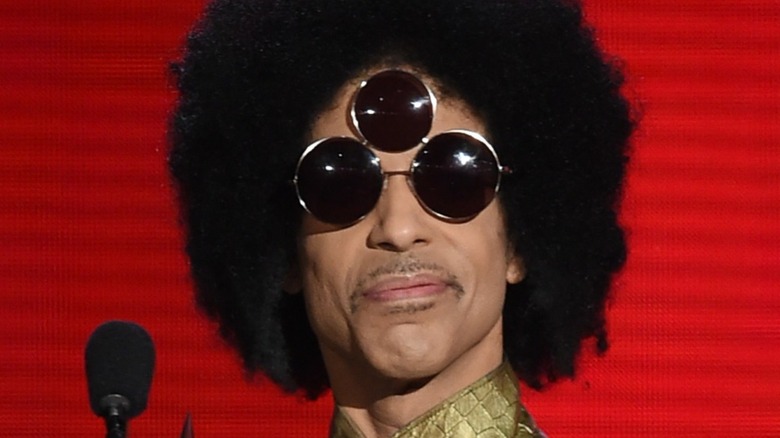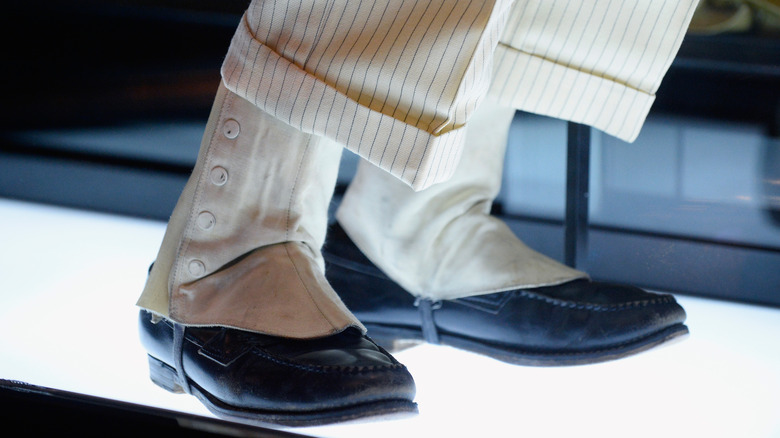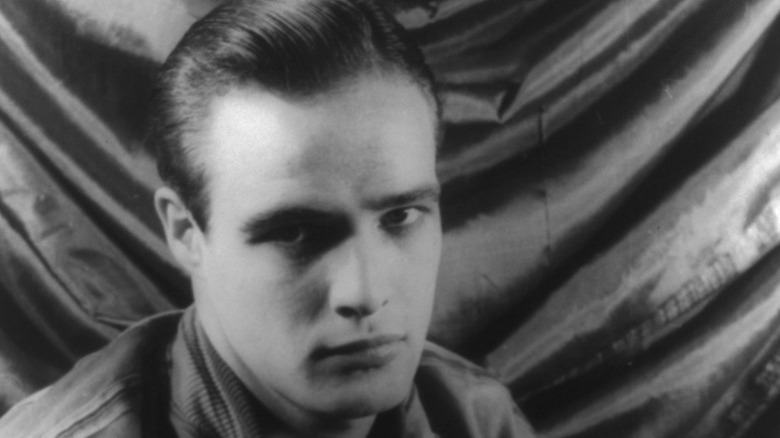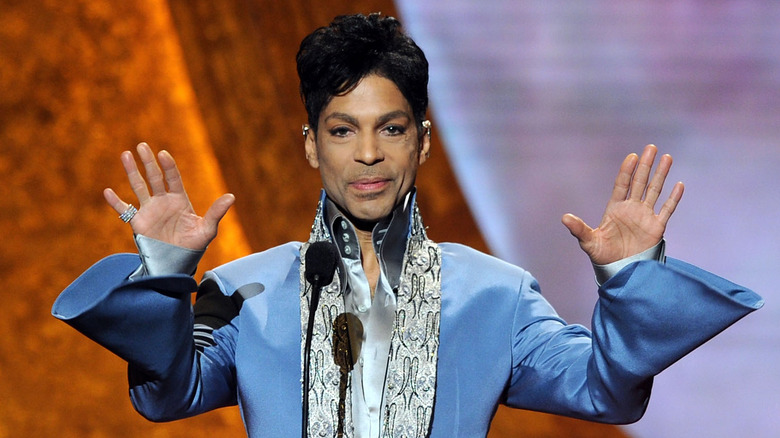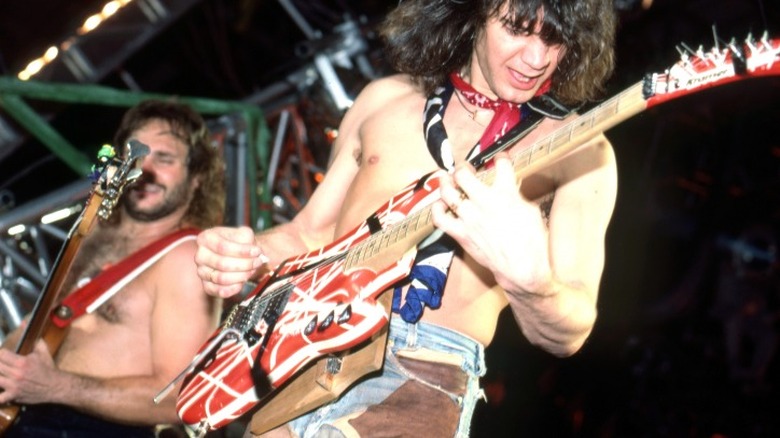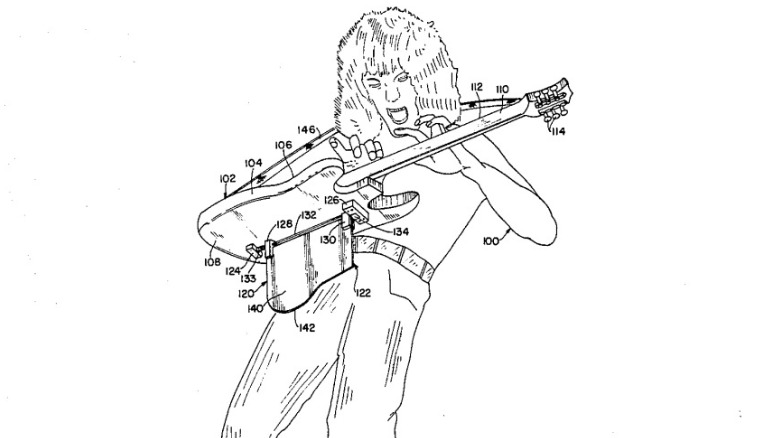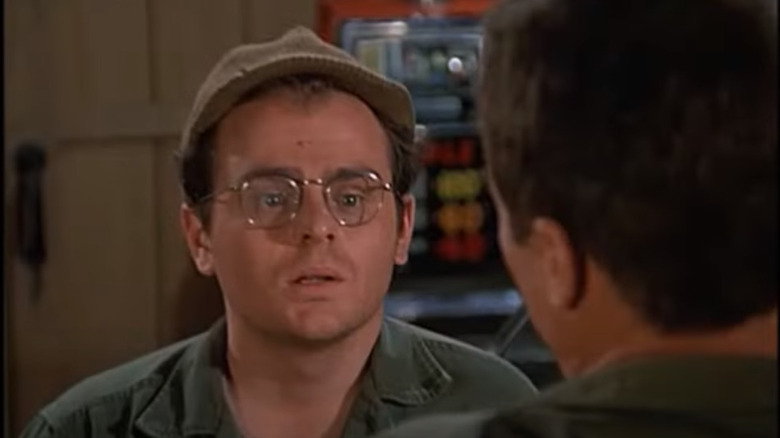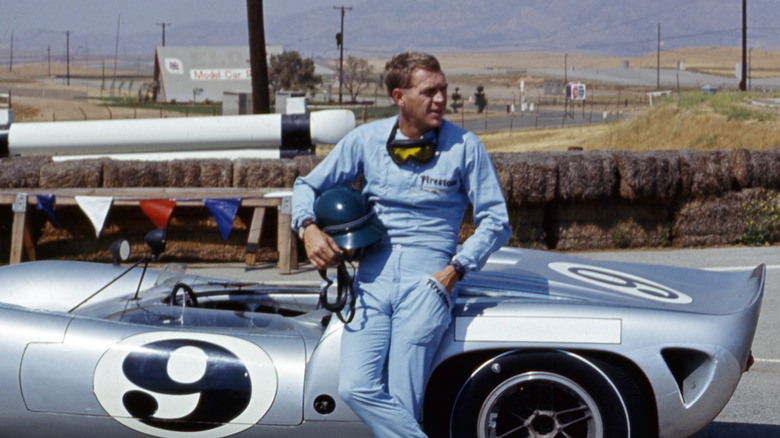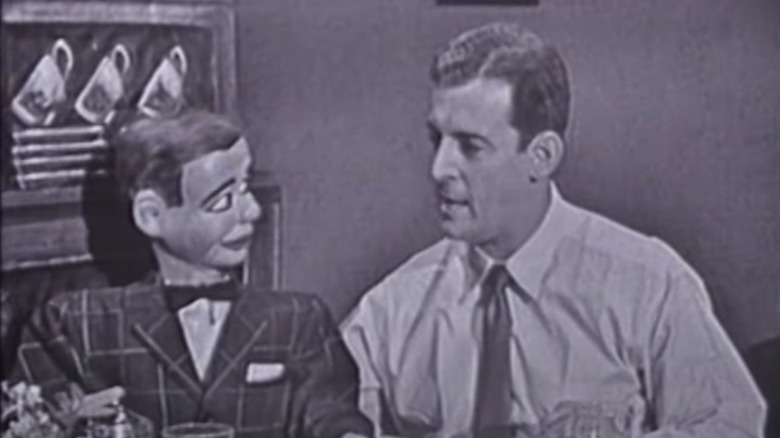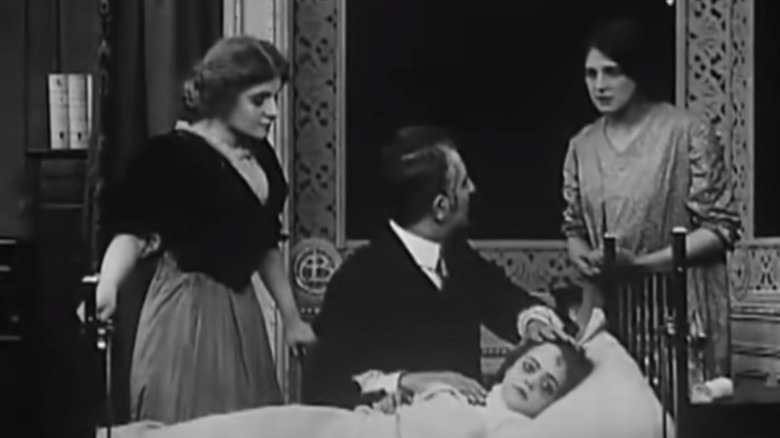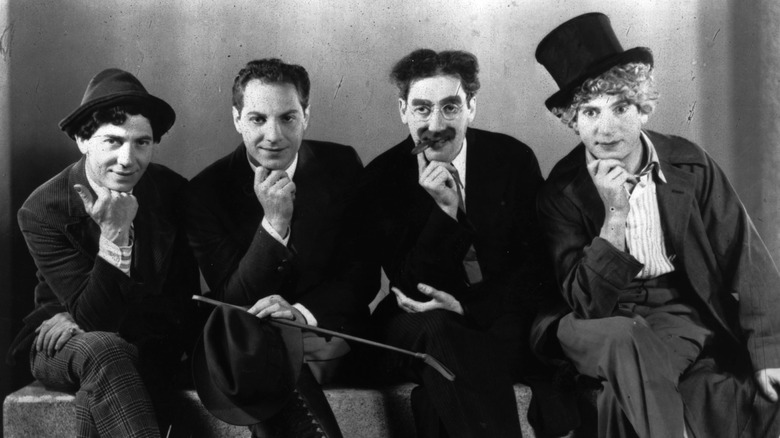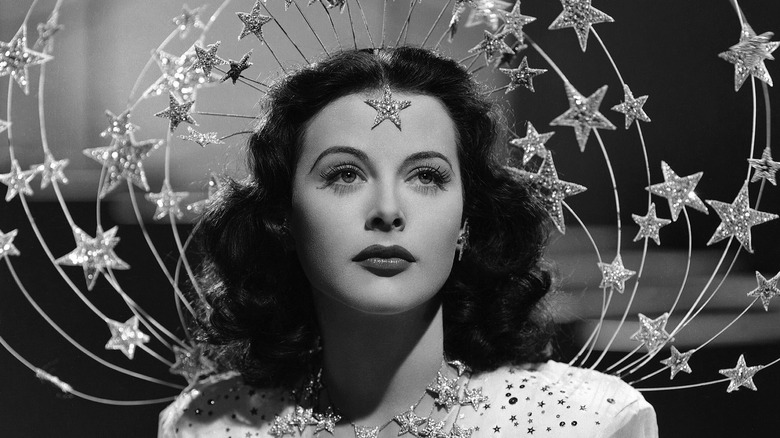12 Amazing Tech Products You Didn't Realize Were Invented By Celebs
Over the past few decades, there have been some astounding examples of inventions made by people whose celebrity personas have far eclipsed what minor fame the USPTO has granted them. A some big-name musicians go on to be successful actors, others leave entertainment so they can spend their time collecting cars. Others have gone on to more scholarly pursuits. For example, Brian May is perhaps best known for his time as lead guitarist for the legendary rock band Queen, but he's since gone on to work with NASA as an astrophysicist.
Today we're taking a look at how Hollywood movie stars, actors, and musicians have created inventions worthy of their own official government patents from institutions like the U.S. Patent and Trademark Office. Some of their ideas are more useful than others. Some of these celebrities have come up with good ideas directly related to the entertainment work that made them famous, while others have become inventors of products that seem to have been pulled out of thin air.
Neil Young's model train remote control
Neil Young has been a fixture of the American rock scene since the late 1960s during a time of protest and upheaval among young Americans. Many of his songs protested the practice of war and sought peace among all people, urging togetherness and peace. His career has now spanned decades and his songs are some of the most recognizable tunes on the planet.
It might surprise you to learn that Niel Young is also a model train enthusiast. According to Classic Toy Trains magazine, he began collecting and setting up train sets in the '90s as a way to connect and spend time with his son, who has cerebral palsy.
Collecting and running train sets led Young to invent an original model train remote control. The device allowed his son, whose movements were severely limited, to control the train and join his father in the fun. Young has a 2003 patent for a device that features a large red button that's meant to act as a simple start and stop, allowing his son to operate the train.
According to Lemelson-MIT, at one point Young had a barn on his ranch with 3000 square feet of space dedicated to model trains. He also invented a sound system for model trains to make them sound more realistic — and a train-mounted video camera system, too. Some of Young's trainsets went up for auction in 2017, selling for around $300,000.
Michael Jackson's method and means for creating anti-gravity illusion
Michael Jackson is possibly the best-known pop star on the planet. Not only did he release dozens of hit songs over the years, but he also amassed a fortune from record sales and live performances. His live shows were known as much for their music as they were for their spectacle as Jackson danced on stage just as well as he sang. In at least one instance, Jackson went so far as to patent an invention that would take his performance to a place normally reserved for illusionists and those that profess to perform magic.
In the video for the song "Smooth Criminal," Jackson and his dancers perform a move in which they lean forward to an angle where, in the real world, gravity would take over and their bodies would fall to the ground. In order to perform this move, the creators of the video employed wires and harnesses which were then hidden from view for the final product.
On tour in 1993, Jackson wanted to recreate this iconic lean move on stage, but didn't want to resort to cables and harnesses that'd inevitably be visible to his audience. Instead, he devised a device and method to perform the lean using his shoes. Patent number US5255452A shows shoes with a v-shaped slot in the heel such that a peg can slide in from the front, thereby preventing the wearer of the shoes from coming off the ground. IT also shows a device that allows the pegs to be pushed up through the stage so they do not remain obstacles when not in use.
Marlon Brando's automatic drum tuner
Known for his iconic roles in "The Godfather," "The Wild Bunch," and "Apocalypse Now," Marlon Brando was a Holywood heavyweight, respected and revered by actors and fans alike. His acting skills are without question and his legacy reaches through the generations. A lesser-known fact about Brando was that he was fairly skilled at playing conga. One of the foremost conga musicians of the 29th century, Jack "Mr. Bongo" Costanza, taught and collaborated with Brando throughout his career, according to the San Diego Union-Tribune.
Shortly before his death, Brando designed his own self-tuning drum. Brando worked with a patent attorney to get his idea patented in 2002. He had approached drum manufacturers about using his design, but poor health started to take its toll and he passed away in 2004. Although his invention never went into production, prototypes were made and still exist, according to NPR. It turns out the design was not terribly cost-effective and somewhat impractical so it is not likely to see mass production any time soon.
Prince's singularly unique keytar
Prince Rogers Nelson was a man of considerable talent. He was not just a platinum record-selling Grammy award winner, he could play an astonishing 27 instruments, according to the BBC. He released his debut album at 20 years old, playing every instrument on the album. When this Renaissance man applied himself to a project, be it music, entertainment, ping pong, or basketball, he did it well. As such, it should come as no surprise that someone with so much talent would have tried his hand at inventing a product worthy of a patent.
When Prince was not touring or writing hit songs for himself and several other top-name artists, he was developing a specialized keyboard to play when on stage. There had already been keytars on the market, but there would be only one "Purplaxxe."
Patent number USD349127S for a portable, electronic musical keyboard was granted in 1994 and shows a design of a keyboard with a shape that could only be described as Prince-like. It does not list any technical functions of the keyboard itself as the patent is for the design of the housing. According to the Atlantic, Prince designed the guitar not for himself but for his keyboard player Tommy Barbarella, who can be seen playing the instrument in the music video embedded above.
Eddie Van Halen's musical instrument support
Our next inventor is guitar virtuoso Edward Van Halen. He, his brother Alex Van Halen, David Lee Roth, and bass guitarist Michael Anthony started tearing up the charts with their band, Van Halen, in 1978. The songwriting and live shows provided the catalyst for the band's success, but Eddie's guitar playing is what really got the critics talking. Using a unique style of hammering on the frets, Eddie made a name for himself as the king of the guitar solo. He also created an invention to aid with his amazing solos.
The device Van Halen devised is a support panel that attaches to the back of the guitar and folds down such that it can hold the instrument parallel to the ground such that the fretboard can be played more like a keyboard. The invention worked, as you'll see in the photo above, but the most excellent part of the legacy of this tech can be found in its official patent filing documents. Patent number US4656917A, granted in 1987, includes what is probably the best patent drawing in the USPTO's entire catalog of patents going back to the establishment of the office. It is a typical patent line drawing indicating how the device is to be used, including a long-haired screaming character that bears a striking resemblance to Van Halen himself.
Gary Burghoff's Chum Magic
One of the longest-running, most successful television shows in history was M.A.S.H., a comedy set in the Korean war in a mobile hospital. This show has remained a key part of our cultural history not only because it was such a smash hit, but because it managed to turn a very serious subject into a comedy that also remained reverent. It is a classic and still a great watch. One of the main characters is Radar, a younger recruit who serves as a company clerk in the unit. He is played by Gary Burghoff, an actor who also turned out to be a rather handy inventor.
After M.A.S.H., Burghoff put down the bugle and picked up a rod and reel. His device is listed in USPTO patent US5117577A as an "Enhanced fish attractor device," but according to The Atlantic, it ended up being called "Chum Magic." This device was made to be filled with bait and tossed in the water to attract fish, who will (apparently) also then be attracted to a baited fishing hook.
Burghoff also holds a patent for a toilet seat handle. There is not much information on it, but looking at the patent drawings, it looks like a device to lift a toilet seat without touching it. Maybe it is useful for the port-o-lets on the set of a fake war.
Steve McQueen's bucket seat shell
Steve McQueen was a major movie star who went on to put his focus and attention on automobile racing. As an actor, he is known for some of the great muscle car-laden movies of his time, including the classic "Bullitt," which includes among the best car chase scenes ever. He later starred in "LeMans," a film about the race of the same name. His legacy is made apparent when items from these movies come up for auction as the car he drove in LeMans did recently.
It is fitting that the invention that shows up under the McQueen name is a car seat. Labeled a "Bucket Seat Shell" in the patent, drawings make it look exactly as described. Aside from the patent itself, there is precious little information about his seat. It looks much like the kind of seat used in race cars of the period, but the idea does not seem to have made it far past the filing.
Jamie Lee Curtis's diaper with a pocket
From her youthful presence in the debut of "Halloween" to her working girl in "Trading Places," Jamie Lee Curtis has been a hard-working actor in the public eye for decades. IMDB tells us she has played 82 roles in TV and film and that she's been nominated for dozens of awards and won many, including the BAFTA and an Emmy. She is a Holywood fixture but she is also an inventor with an official patent to prove it.
Curtis's patent for a special sort of diaper was granted in 2016. Specifically, it is described as a "Unitary disposable diaper with integrated soilage-management structure including disposal container." In simpler terms, it is a diaper with a pocket for wipes. According to the Hollywood Reporter, she had the idea for the invention when she was raising her kids and found the need for simple access to a diaper-based solution. While her bid for a USPTO patent was successful, nothing else has come of it since.
Paul Winchell's artificial heart
Ventriloquists rarely find widespread fame and stardom in the modern age, but that has not always been true. As noted by The Smithsonian, in the early days of television, "The Paul Winchell Show" saw significant success with a winning combination of Winchell and his dummy sidekick Charlie Mahoney. Winchell had a long career in show business and portrayed many roles without his dummies, and also seems to have been inspired to push his connection to the human-made body to the limit with his very own patent for an artificial heart.
Winchel was a prolific inventor, having been awarded more than thirty patents throughout his career. His ideas were not confined to any particular discipline. Among his patents are a non-bulging device for holding up stockings, a sugar pouring device with an agitator to speed flow, a flour sifter, and, most importantly, an artificial heart. His profile at MIT states that he befriended Dr. Henry Heimlich — of Heimlich maneuver fame — and was invited to observe many surgeries. This experience led him to create a device that could keep blood flowing throughout an operation on the heart to give patients a better chance of survival. It was not ever put into use, but Winchel later gifted his patent to the University of Utah where it acted as inspiration for the first successful implant of an artificial heart in 1982.
Florence Lawrence's turn signals
Florence Lawrence, the first woman who could conceivably be considered a movie star, worked on movies from the very beginning, starring in more than 250 films of the early silent era. Her movie career started in 1907 and by 1910 she had landed a headlining role, the first for a female actor. According to History, film success allowed her to afford her own automobile, an extremely expensive luxury for anyone at the time. It was her passion for her automobile that led to one of the most invaluable and influential inventions on our list today.
Florence Lawrence invented the modern turn signal. According to MIT, "She was a truly passionate automobile enthusiast who believed that cars responded best to proper care and communication, and she had many ideas for improving them." Lawrence's invention involved flaps attached to the bumper which would swing out when a button was pressed by the driver. Early cars had few safety features, so this one was a welcome addition. It also had a flap labeled "full stop" that came up when the brake pedal was pushed.
She did not apply for a patent, so she received no recognition or payment for her invention. Incidentally, her mother also patented electric windshield wipers in the year 1917 and also received little to nothing for her contribution to the automobile (via MIT).
Zeppo Marx's Marmon clamp
The Marx Brothers were such a successful comedy team of their time that most people today know who they are, even if they have never seen their act. According to Harlem World, their unique style of comedy was born on the vaudeville circuit but eventually landed them on broadway before ending up on film. They were the most successful comedy team of the twenties and thirties and left an indelible impression on American pop culture. The quartet headed down different paths after WWII with only occasional reunions. It is during the war when Zeppo, born Herbert Manfred Marx, contributed to ending the way in a profoundly tangible way.
Zeppo was always an engineer at heart and had established an engineering and manufacturing firm during his time as an entertainer. Zeppo was granted multiple patents in his lifetime, including a wristwatch-style heartbeat monitor, and his firm, Marman engineering, produced a variety of products. Among the products made by the firm is the Marman Clamp. It came into play when engineers with Air Force needed to securely mount a weapon to the Enola Gay for a top-secret mission flown into the enemy territory of Japan. While it had a wide range of purposes, Marx's clamp would enable the American military to deliver the first and second ever atomic bombs, effectively ending the war (via Marx-Brothers.com).
Hedy Lamarr's precursor to Wi-Fi
Born in Czechoslovakia in 1914, Hedy Lamarr established a promising career in film early in her life. However, as the daughter of Jewish parents, the political situation quickly became untenable for her and she found a way to escape by accepting work in the United States with a film deal. From there, she became one of the leading ladies of Hollywood and stunned audiences with her beauty and vivacity until war altered everything throughout the country. After the U.S. entered the war, Lamarr wanted to help and left Hollywood to make her contribution by joining the Inventors Council in Washington (via National Archives).
During this time she and her partner, composer George Antheil, developed a method of communication shown in patent 2,292,387 "Secret Communication System" dated August 11, 1942. This system used a sort of frequency hopping technique that prevented potential signal interception by enemy agents. It had wide-ranging possibilities and potential for use on weapon systems such as torpedoes.
For a variety of reasons, her idea wasn't immediately implemented by the U.S. government, (as far as public records go), and sat unused for many years. Private sector development in the '50s used the "Secret Communication System" to develop code division multiple access (CDMA), one of the key technological advances that made mobile phones a reality. Frequency hopping was first officially utilized by the Navy during the U.S.'s 1962 blockade of Cuba, while Lamarr's invention also went on to become the underlying technology behind Wi-Fi and Bluetooth communication (via Women's History Museum).
